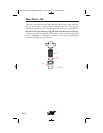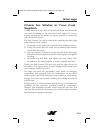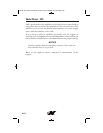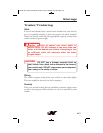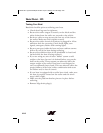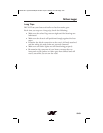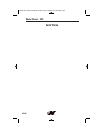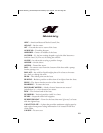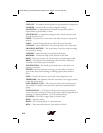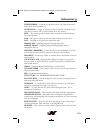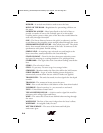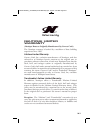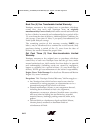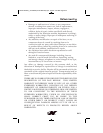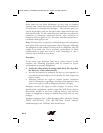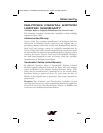
G-2
CAST-OFF – To unfasten mooring lines in preparation for departure.
CATHODE – An electrode carrying a negative charge.
CAVITATION – A phenomenon in which low pressure within a
liquid allows vapor bubbles to form.
CENTER LINE – A lengthwise imaginary line which runs fore and
aft with the boat’s keel.
CHINE – The point on a boat where the side intersects (meets) the
bottom.
CLEAT – A deck fitting with ears to which lines are fastened.
CONSOLE – Also called helm. The steering wheel area of the boat.
CRANKING BATTERY – The main battery used for engine starting
and electrical circuits.
CURRENT – Water moving in a horizontal direction.
DEADRISE – Transverse angle of the bottom of the hull.
DECK – The open surface on the boat where the passengers walk.
DRAFT – The depth of the boat below the water line, measured
vertically to the lowest part of the hull.
ELECTROLYSIS – The break-up of metals due to the effects of
galvanic corrosion.
FENDER – Devices built into or hung over the sides of a boat to
prevent the boat from rubbing or chafing against other boats or
piers.
FORE – Toward the front or bow of the boat. Opposite of aft.
FREEBOARD –The distance from the waterline to the upper surface
of the side of the deck.
FUEL SENDING UNIT – The electrical device that is mounted on
the outside of a built-in fuel tank and controls the dashboard fuel
gauge.
GIVE-WAY BOAT – (1) Term for the boat that must take whatever
action necessary to keep well clear of the boat with the right-of-way in
meeting or crossing situations. (2) The burdened boat.
GUNWALE – The rail or upper edge of a boat’s side.
HEAD – A marine toilet.
HELM – The steering wheel or command area.
HULL – The structural body of a boat below the deck.
D-Drive Glossary_2010:Nautique Ski Glossary.qxd 7/23/09 4:51 PM Page G-2



